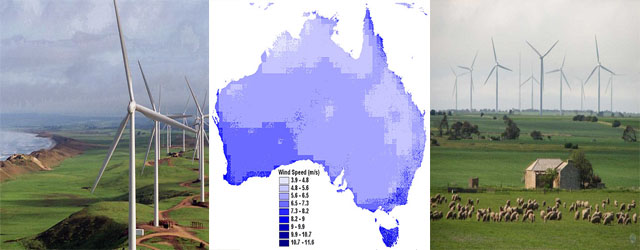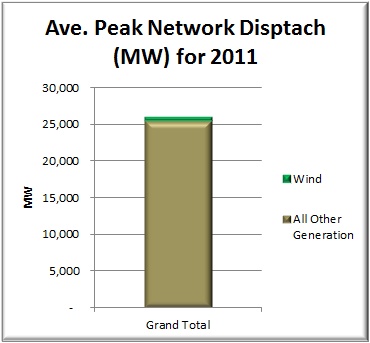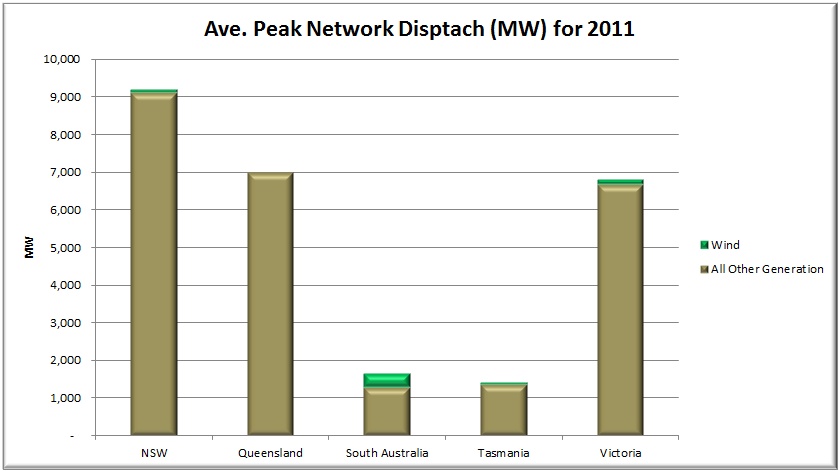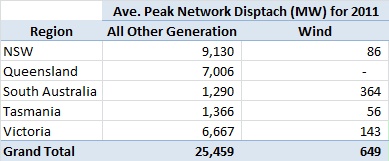We see a fair number of wind farms dotted around our vast Australian landscape. They must be making a difference. They must be significantly reducing our Carbon Footprint?
In a nutshell, no, they’re not.
It’s very complex statement to fully qualify, but the easiest way to demonstrate how all our current, wind farms are just paying Green, lip service is to look at their actual contribution to our energy mix.
Using official market data from AEMO (Australian Energy Market Operator), here’s the average dispatch (in MW) by region for wind generation:
The contribution of Wind energy to Australia’s energy network:
From this underlying data:
Discussion
Across all regions of Australia, the total average dispatch for all technology types is currently around 25,000MW. With wind contributing 650MW to the mix, that means it provides less than 3% of our energy needs. In addition, wind energy is intermittent (i.e. unreliable) because generation is at the behest of nature. This means it doesn’t follow our human demand requirements and makes its real, useful contribution to our energy needs even less significant. This is the unfortunate truth, all the rest of the hype that is frequently published by the Renewables sector, sadly, is just that, hype.
So, why don’t we just build more wind farms to improve wind’s contribution, and thus CO2 abatement effectiveness?
Well, that doesn’t really follow, in this case, building more will not improve their effectiveness to our energy network. Wind farms are very expensive to make (at least 3x more than coal-powered generation) and most of the best (i.e. windiest and most accessible) sites have already been used.
How about solar panels on my roof, aren’t they just effective at producing Green energy?
Solar panels, whether in large arrays in the desert or on your suburban roof, really are just buying votes. There is no viable, economic justification for them. They are only economically favourable to you us home owners because other home owners are paying extra on their electricity bill for you. They subsidise your highly expensive solar panels through heavily rorted and mis-managed, Green schemes such us RECs (Renewable Energy Certificates). By way of example, these RECs had to be converted into SRECs (Solar Renewable Energy Certificates) as the subsidy for solar paneled, home owners ironically reduced wind farm subsidies that were in the same scheme. The collapse in REC value due to generation of power by solar panels on homes was such that it even prevented new wind farm construction. This is perhaps a classic example of Big Government in action; meaning well, but sadly falling short of delivering on their promises. There is no successful cost-benefit, business case for solar panels apart from the feel good factor they provide and the political capital they generate. To put it into perspective, their installation cost is 4x more again than even expensive wind farms.
“the total output of all photovoltaic cells yet made is probably less than the energy used to make them all…
Cutting emissions means cutting energy use: travel less, heat less and make less.” – Julian Allwood – author of “Sustainable Materials: With Both Eyes Open (2012)
Julian Allwood and I may sit on either of the fence: he a believer in anthropogenic-based, Global Warming, me predominantly a skeptic. However, I believe this statement is pretty much on the money. Photovoltaics are just votes and redundant in preventing Greenhouse Gas emissions. On the contrary, they have a net contribution to the “problem”. In addition, if you are serious about reducing these emissions then expensive Carbon Taxes is not the best driver to achieve this. There is just very little evidence for this market based scheme actually driving effective efficiencies. Reducing consumption is the only way to make a difference. But, as the global market and banking systems are fueled by consumption, then politicians and industrialists alike won’t be promoting this philosophy too hard.
Conclusion
Wind technology is highly sophisticated and mass produced in China with high levels of economies of scale already achieved. Apart from the lip service they pay to being Green, they are a truly uneconomic eye-sore of a solution to purportedly prevent Greenhouse Gas emissions. In Australia, we already have a significant number of wind farms (even though it is only 3% of our total energy generation). If we expand our wind farm base (or, even more severely economically, solar panel number), we will push our once, super cheap energy from our current, quite expensive price, to being the world’s No. 1 in unnecessary over-pricing.





